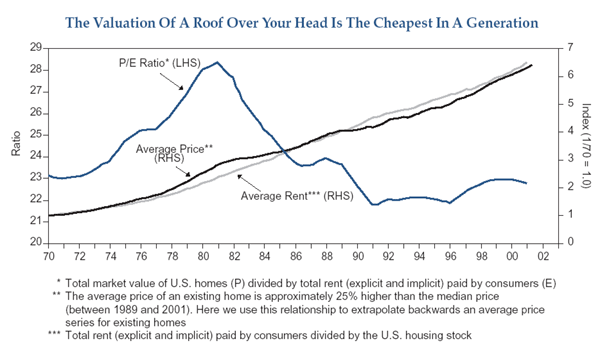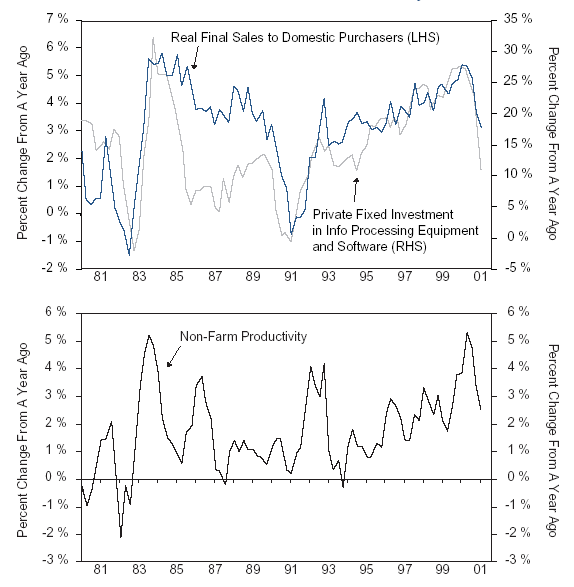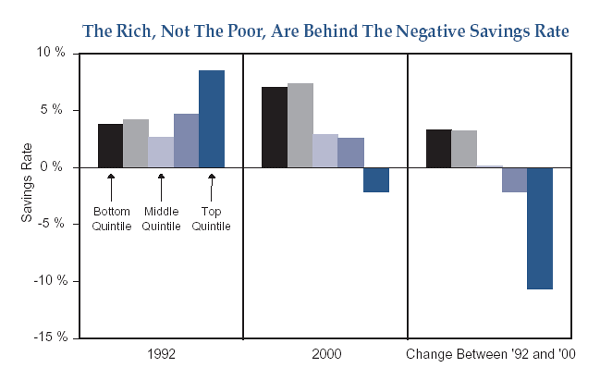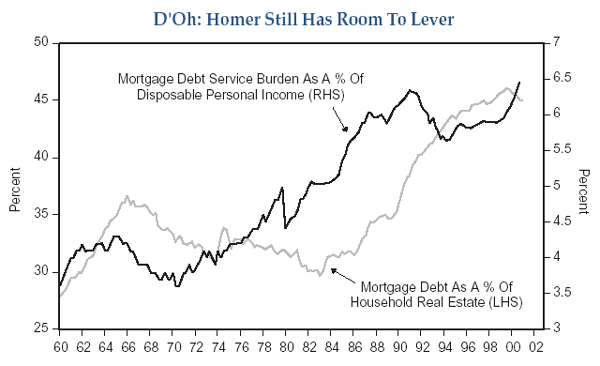Show A Little Passion, Baby
I don’t write about G-3 policy coordination very often, because G-3 policy coordination is actually an oxymoron most of the time. Which is not the same thing as calling G-3 policy makers morons. Global policy coordination is inherently a difficult process because policy makers are held accountable by their own sovereign democratic processes. This is as it should be. Any man who’s ever tried to organize a card game with his old, but now married, college buddies knows the drill. Policy coordination is about making concessions to get concessions. And in a world of conceded players, coordination works only when the stars are aligned so that all the players think they are getting more than they are giving.
Such moments are rare, triggered by the emergence of a common enemy, with each player unable, by himself, to retreat from engaging the enemy. Such as running out of beer at the poker game. Policy makers within the G-3 rarely reach such a moment of truth, because (1) each of the regions is founded on a different blend of capitalism and socialism, and (2) the global business cycle is rarely synchronous. What is more, since currencies are the relative prices of the regions, a bull run for one currency is by definition a bear run for another, or vice-versa.

Figure 1
Source: Bureau of Economic Analysis, National Association of Realtors
Thus, it is hard to ascertain as to whether the bull or the bear country (countries) needs to adjust policy, in which case coordination takes on elements of a game of serial solitaire, with a deck of fifty-one. As a practical matter, the moment is ripe for G-3 policy coordination only when all three regions’ currencies are moving, as a basket, against something else in a mutually adverse way. And what might that “something else” be?
The most obvious answer is a self-feeding panic in global capital markets, such as the crash in equity prices in 1987, or the crash in global credit risk markets in 1998. Both events elicited global monetary easing, led by the United States. Fortunately, such seizures in the global capital markets don’t happen very often. Unfortunately, this means that G-3 policy coordination is an exercise in ad hoc-ery, with little capacity for preemptive policy adjustments to prevent global capital market seizures. As Churchill intoned long ago in a different context, the prospect of being hung within a fortnight does seem to be necessary to concentrate the mind.
I believe the G-3 has a rope looming within shouting distance of its collective neck. Actually, it is a disease that will morph into rope, unless properly treated. It’s called Global Post Bubble Disorder, defined as:
n Excess capacity to produce globally traded goods and services, the outcome of a mindless global boom in business investment.
n Severe deflationary pressure on profit margins in globally traded goods and services, as deflating prices collide with high fixed cost structures, made so by both financing expenses and depreciation expenses for all that mindless investment.
n A draconian turn to business cost cutting, hammering both investment budgets and headcount budgets.
n All of which leads to downward pressure on global incomes and, through falling equity prices, on global wealth, putting self-feeding downward pressure on global aggregate demand.
Re-Learning That Which Has Been Un-Learned
The economics of the matter should not really be in dispute, but they are. The reason, I think, is that the aggregate demand reflation treatment is found in the macroeconomics of Keynes, and the economics profession has spent a generation denying the efficacy (and morality!) of Keynesian thought. For all of my adult lifetime (assuming it’s started!), the economics community has been railing against the evils of inflation and budget deficits, urging policymakers to (1) give central banks maximum political independence to inflict whatever pain is necessary to prevent rising inflation, and (2) to eschew all attempts at counter-cyclical fiscal policy aimed at fine-tuning aggregate demand. Simply put, the Keynesians lost, and the Monetarists and the Supply Siders won the battle for ideas.
Milton Friedman, the father of Monetarism, would violently disagree with that assertion, I’m sure, retorting that central bankers never, ever, adopted his proposal for consistent, steady growth in some measure of money. And in a narrow sense, he would be right. But in a broad sense, he would be wrong. Central banks may not have become religious marksmen of growth in the money stock, but they have become religious believers in the notion that monetary policy is more powerful than fiscal policy, and that monetary policy should rule the policy roost. And that is the soul of Monetarism.
Art Laffer, the prophet of Supply Side economics (Say’s Law economics, really, which maintains that supply creates its own demand), would also no doubt object to my assertion that fiscal authorities have fully bought his notion of more capitalism via reduced taxes on the fruits of capitalism. And like Friedman, Art would be right in a narrow sense, as tax rates for capitalists are higher today than a decade ago. But in a broad sense, Art would be wrong, as manifest by the policy-supported Double Bubbles in stocks and business investment in the late 1990s: (1) monetary policy preemptively rejected preemptively identifying and deflating the bubbles, and (2) fiscal surpluses supported the bubbles by force-feeding national savings into the capital markets. The stock market became both the fuel of capitalism and its national symbol of success. And that is the soul of Laffer-nomics.
While the Double Bubbles were inflating, the economics profession ridiculed the core tenet of Keynesian macroeconomic thought, known as the Paradox of Thrift: it is possible for the economy to evolve from a state of surplus investment appetite to a state of surplus savings appetite. Indeed, the economics profession got itself wrapped ‘round the opposite axle of bemoaning too little savings in the United States’ private sector, notably and particularly in the household sector. If only the hedonistic American consumer could be taught to save, all would be right with the world! In fact, no less a figure than Mr. Greenspan himself, aided and abetted by Fed Governor Meyer, diagnosed the Double Bubbles as simply Say’s Law on steroids:
Not only was the positive productivity shock on the supply side generating its own demand, they argued, but too much demand. Ebullient (or was that exuberant?) equity markets, discounting improved long-term supply potential, were creating a wealth effect that was dangerously stimulating cyclical demand, notably consumer spending, pushing the unemployment rate too low, threatening rising inflation, they warned.
So, the Fed did what comes natural when the unemployment rate falls below what the Fed deems to be its “natural” rate, and hiked short rates 175 basis points from mid-1999 through mid-2000. All in an effort to thwart the wealth effect, which Greenspan duplicitously argued was “ not all that closely tied to the stock market.” 1
Buying It Ain't the Same as Using It
What Greenspan did not recognize, or more cynically, recognized and refused to accept was that the thrill of buying new technology was the key factor turbo-charging aggregate demand. And in the context of the economy’s inherent cyclical operating leverage, such investment was boosting cyclical productivity growth. It was always an open question as to whether or not the new technology would generate a sustained acceleration in the economy’s structural productivity growth, otherwise known as supply side potential, generating a sustained acceleration in the return on investment, otherwise known as profits. But Mr. Greenspan decided that open questions should not be left open, and beguiled himself into believing that the economy was experiencing mostly a structural productivity miracle. Hubris does strange things to smart people, I suppose.
With the thrill of investment victory giving way to the agony of profit defeat, both aggregate demand and productivity growth are fellow travelers to the downside, led by decelerating business demand for technology, as shown in Figure 2. Quite understandably, businesses are trying to increase their savings, or reduce their rate of dis-savings, by cutting their spending. Nothing wrong with that from a microeconomic perspective. In fact, if I were a shareholder in a company that had been engaged in mindless investment, I would demand that management find its mind, or find a new job. From a macroeconomic perspective, however, if every mindless management finds it mind at the same time, we have a Keynesian Paradox of Thrift problem, ‘cause one company’s spending is another company’s income. If all companies try to individually save more (or dis-save less) at the same time, they will collectively save less, because they will collectively batter their aggregate top-line revenue, setting off yet further attempts to save more (dis-save less).

Figure 2
Source: Bureau of Economic Analysis, Bureau of the Census
This Paradox of Thrift problem gets worse, as corporations also attempt to save still more (or dis-save less) by slashing headcounts, which soaring initial unemployment claims patently document at present. Business’ labor costs are households’ income, and individually, it is rational for households to seek to increase their savings (or cut their dis-savings) when the nation’s bosses are doing root canal on their payrolls. But again, from a macroeconomic perspective, if all households try to individually save more (or dis-save less) at the same time, they will collectively save less, because they will collectively destroy their employers’ revenues streams, triggering yet more corporate dental work on headcounts.
Beam Me Up, Maynard
Post Bubble Disorder in America is actually a case of the Paradox of Thrift. And it ain’t all that amenable to the cure of monetary reflation. Not that I’m against monetary reflation. Indeed, I frequently comment ‘round here, and only partly tongue in cheek, that if the central bank prints enough twenties, everything will go to par (and if it doesn’t, that’s prima facie evidence that the central bank ain’t printing enough twenties!). I’m even more enamored of fiscal policy reflation, as I pounded the table last month, 2 because it is a frontal assault on the Paradox of Thrift. There is no heavenly or earthly reason for the sovereign government of the global reserve currency to be a net saver amidst Global Post Bubble Disorder. Uncle Sam should be re-levering, not del-levering his pristine balance sheet. Marketable Federal debt held by the public is only 32% of U.S. GDP, one-half of the putative limit for membership in the European Monetary Union!
In comparison to its G-3 brethren, however, the United States is a Keynesian stud in attempting to cut the (deficiency of) aggregate demand rope that hangs near the collective G-3 neck. Both monetary and fiscal policies in the United States are blatantly, and proactively aimed at reviving American consumer hedonism. Indeed, I note with pleasure that Washington policy makers of all stripes now applaud the American consumers’ ability to “hang in there” during the sobering up from American business’s investment binge. Consumer exuberance, once the object of the Fed’s tightening wrath, is now viewed as the source of the nation’s economic salvation. Sweet Keynesian revenge!
Even the Fed has come clean in its criticism of America’s urge to shop, providing rigorous analysis showing that the falling, and now negative household savings rate is (more than) fully explained by a falling savings rate for families in the top 20% of American’s income distribution. The bottom 80% of America’s families actually increased their savings rate during the 1990s, as vividly displayed in Figure 3. The average American has room to continue shopping, ‘cause he and she ain’t dropped; he and she are actually standing taller!
The average American also owns a home. In fact, the home ownership rate in America is at a record high 68%. And while most of those homes are levered, there is room to lever them even more, from both a balance sheet and an income statement perspective, as shown in Figure 4. Most important, perhaps, valuation of homes – the price of a home divided by the shelter services that it provides – is secularly cheap, as shown in Figure 1 on the cover. There is room for the Fed to create a bubble in housing prices, if necessary, to sustain American hedonism. And I think the Fed has the will to do so, even though political correctness would demand that Mr. Greenspan deny any such thing (just like he denied belatedly attacking the NASDAQ bubble). So, while I may think Washington needs to put more Keynesian proof in the policy beverage it is serving, there is no question that Washington is pouring from the right decanter.

Figure 3
Source: Maki, Dean and Palumbo, Michael. "Disentangling the Wealth Effect: A Cohort Analysis of Household Saving in the 1990s,"
Board of Governors, Finance and Economics Discussion Series, April 2001
Figure 4
Source: Bureau of Economic Analysis, Bureau of the Census
The Currency Paradox Of G-1 Keynesianism
The global currency markets are applauding, deciding that in the midst of Global Post Bubble Disorder, the currency of the country trying the hardest to break the Paradox of Thrift is the one you want to own. From an individual portfolio manager’s perspective, this is rational, just as it is rational for individual workers to increase their savings appetite when the boss starts humming the pink slip blues. If all portfolio managers individually have the same rational impulse to buy the dollar, however, they will collectively create the irrational outcome of a bubble for the dollar. It’s the same process by which all workers acting individually rational can produce the collectively irrational outcome of the Paradox of Thrift.
Call it the Currency Paradox of G-1 Keynesianism. And it’s bad, because a bubble for the dollar is deflationary for globally traded goods and services prices, exacerbating Global Post Bubble Disorder. The way out, just as in the case of the Paradox of Thrift, is for the public sector to take the other side of the private sector’s individually rational, but collectively irrational proclivities. The way to break the Currency Paradox of G-1 Keynesianism is to adopt G-3 Keynesianism!
Which brings us back to where I started: G-3 policy coordination really only works when all three regions’ currencies are moving, as a basket, against something else in a mutually adverse way. And that something else right now is globally traded goods and services prices, which are under deflationary pressures, and in many cases, actually deflating. The United States can’t effectively address this problem alone, because to go it alone is to create a dollar bubble, which exacerbates the problem. And regrettably, Japan can’t help. In fact, if Japan does what the world is demanding, notably pulling the plug on its banking system’s walking dead bankrupts, Japan will be adding to global deflationary pressures.
Listen to Your Heart, Wim
When I talk about G-3 Keynesianism, I’m really talking about G-2 Keynesianism Bluntly put, it is time for the European Central Bank to get with the Keynesian program.
More specifically, it is time for ECB policymakers to accept the self-evident truth that the currency markets are rewarding pro-demand, not anti-inflation monetary policy. It really is that simple. If the ECB wants the Euro to go up, it should (1) aggressively ease domestic interest rates, without obfuscation or apology for missing its inane inflation target; (2) buy the daylights out of the Euro with its enormous reserves of dollars; and (3) insist and demand that the United States sell the stuffing out of the dollar, which it can print.
Will it happen? Regrettably, not soon, I suspect. The clock on Churchill’s fortnight to hanging time is not ticking loud enough yet. But I think it will. G-1 Keynesianism is inherently unsustainable, just as America’s Double Bubbles proved to be unsustainable. Prudence demands, however, that we remember Keynes’ dictum that markets can remain irrational longer than the rational investor can remain solvent. So, it is not time to bet thy whole wad on the Euro. But in the fullness of time, there will come a time, when time will be full. And that will be when the rope of the Currency Paradox of G-1 Keynesianism is fully engaged under the chins of G-3 policymakers.
Were it not so, but it is. If only the ECB’s Wim Duisenberg would curl up with Keynes’ General Theory, while listening to a few bars of Mary Chapin Carpenter.
Show a little passion, baby,
show a little style
Show the knack for knowing when
And the gift for knowing how.
Paul A. McCulley
Managing Director
June 25, 2001
mcculley@pimco.com
1 See "Fly Fishing In A Deli," Fed Focus, March 1, 2000
2 See "Prisoners Of Our Own Domain," Fed Focus, June 4, 2001
Disclosures
No part of this publication may be reproduced in any form, or referred to in any other publication, without express written permission.
This article contains the current opinions of the author but not necessarily Pacific Investment Management Company, and does not represent a recommendation of any particular security, strategy or investment product.
The author's opinions are subject to change without notice. Information contained herein has been obtained from sources believed to be reliable, but is not guaranteed.
This article is distributed for educational purposes and should not be considered as investment advice or an offer of any security for sale. Past performance is not indicative of future results and no representation is made that the stated results will be replicated. Copyright ©1999-2003 Pacific Investment Management Company LLC. All rights reserved.

